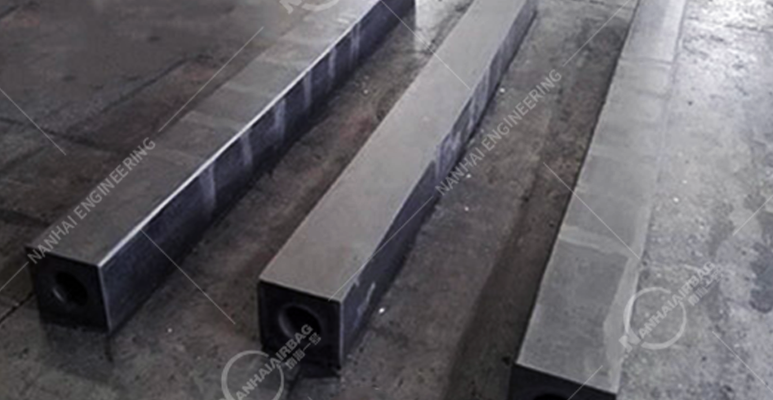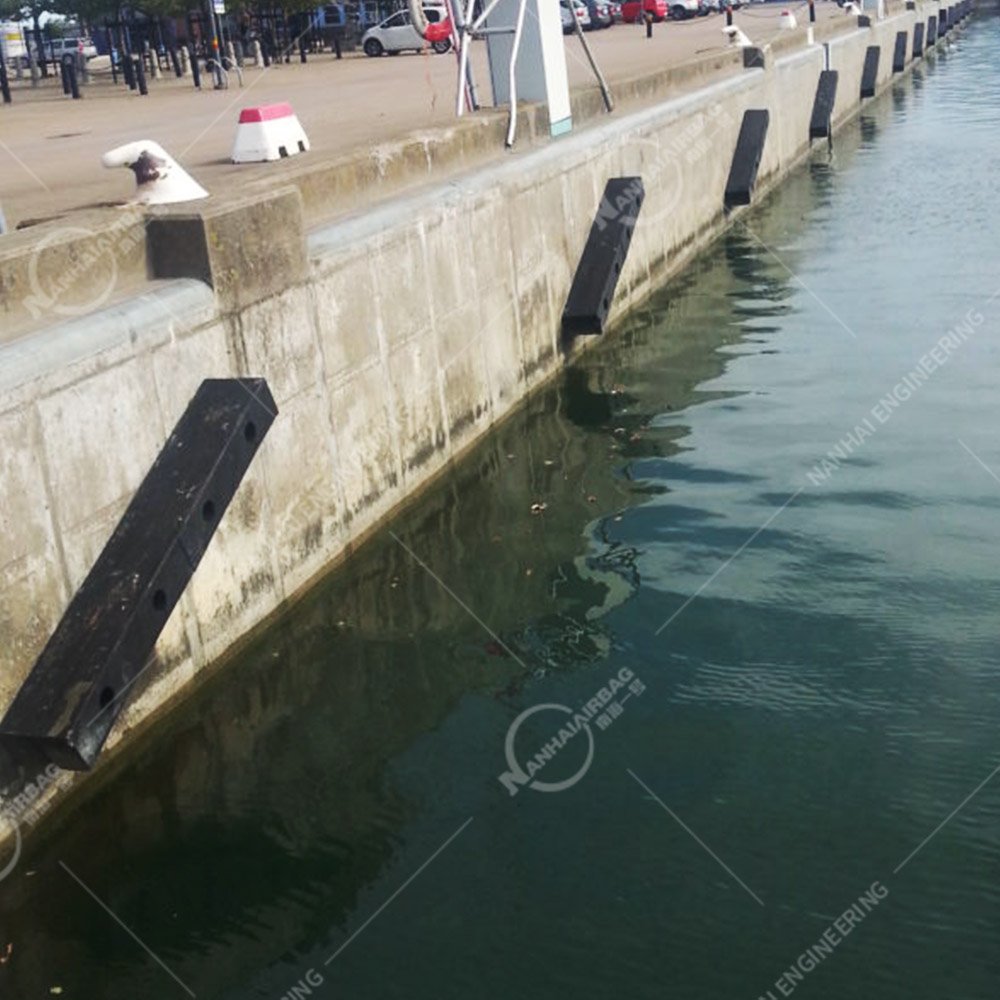Ship Lifting Airbags: The Game-Changing Tool Revitalizing Ship Launches (and Saving Time, Money, and Stress)
10/07/2025Hydro Pneumatic Fenders: The Marine Industry’s Ultimate Defense Against Costly Collisions
17/07/2025


Ever watched a massive cargo ship glide alongside a busy dock, only to cringe as metal scrapes against concrete? Or a small ferry’s hull get dented because the fender system failed during docking? Those “oops” moments aren’t just annoying—they’re expensive. Enter square rubber fenders: the low-key but critical tools that protect ships, docks, and wallets from the chaos of berthing. Let’s unpack why these rectangular rubber workhorses are a must-have for modern ports, marinas, and even DIY boat owners.
What Are Square Rubber Fenders?
Square rubber fenders are flat, rectangular rubber blocks (or “pads”) designed to absorb impact and reduce friction between ships and docks during docking, mooring, or repositioning. Unlike round fenders (which look like giant rubber wheels), their square shape distributes pressure evenly across a wider area—think of them as the “shock absorbers” of the marine world. Made from layers of high-quality rubber (like natural rubber, EPDM, or neoprene) reinforced with steel or fabric, they’re built to withstand years of crashes, scrapes, and heavy use.
Why This Matters: When Poor Fenders Cost Millions (and Ruin Reputations)
Imagine a busy port in Singapore during peak shipping season. A 200m container ship glides in, but the dock’s old round fenders shift out of place. The ship’s steel hull scrapes the concrete—ripping a 2m-long gash. Repairs? 150k.Downtime?3dayslostinport.Cargodelays?50k in penalties. All because the fenders couldn’t handle the impact.
The Hidden Costs of Outdated Fender Systems
- Hull Damage: Rigid or poorly placed fenders focus impact on small areas, cracking fiberglass, bending metal, or tearing aluminum. A single deep scratch can require sandblasting, priming, and repainting—costing 10k–50k per incident.
- Dock Damage: Concrete or steel docks take a beating too. Without proper fenders, ship hulls can ding edges, crack joints, or even dislodge bolts—leading to 20k–100k in repairs.
- Downtime & Delays: Even minor damage means ships can’t sail. For a port handling 50+ vessels weekly, 1 day of downtime per ship costs 50k–100k in lost revenue.
- Safety Risks: A sudden jolt from a failed fender can injure crew or dock workers. In 2023, a misaligned fender at a U.S. marina sent a worker to the hospital with a broken arm—all because the fenders were worn out.
Square rubber fenders slash these risks. At a busy marina in Florida, switching to square rubber fenders cut hull damage incidents by 70% in 6 months. A port in Rotterdam reported 40% fewer dock repairs after upgrading. And for small boat owners? A 200squarefenderpadcansave5k in hull repairs over 3 years.
Why Square Rubber Fenders Beat Round Fenders, Bumpers, and DIY Solutions
Not all fenders are created equal. Here’s why square rubber fenders are the smart choice:
1. Even Pressure Distribution = Less Damage
Round fenders (like cylindrical “bumpers”) concentrate impact on a single point, leading to dents or tears. Square fenders spread that force across their flat surface, so even heavy ships glide smoothly without damaging hulls or docks.
2. Versatility for Every Vessel Size
Need to protect a 5m sailboat? A 150m oil tanker? Square fenders come in sizes from 30cm x 30cm (for small boats) to 2m x 2m (for industrial docks). Their modular design lets you stack them or arrange them in grids to match any hull shape.
3. Durability That Lasts
Top-quality square rubber fenders are built with reinforced steel cores and UV-resistant rubber, so they don’t rot, crack, or fade—even in saltwater, extreme heat, or freezing winters. Cheaper alternatives tear after 6–12 months; premium ones last 5+ years.
4. Easy to Install (and Maintain)
No heavy machinery needed. Most square fenders attach with bolts, chains, or brackets—so a team of 2–3 workers can set up a full dock system in a few hours. Cleaning? Just hose them off with water.
People Also Ask: Your Top Questions About Square Rubber Fenders
Q: Are square rubber fenders better than marine airbags?
A: They serve different purposes. Marine airbags (inflatable rubber cylinders) are for liftingships during launches or repositioning. Square rubber fenders are for protectingvessels and docks during docking. Both use tough rubber, but their roles are distinct.
Q: How do I choose the right size square rubber fender?
A: Match the fender size to your vessel’s weight and speed. For example:
- Small boats (≤10m): 30cm–50cm square pads.
- Medium boats (10m–30m): 50cm–1m pads.
- Large ships (≥30m): 1m–2m pads (or multiple smaller ones).Manufacturers often provide free guides based on vessel specs.
Q: Can square rubber fenders handle rough weather?
A: Absolutely. Premium fenders are tested for extreme temperatures (-40°C to 80°C), UV exposure, and saltwater corrosion. They even work in windy or rainy docking conditions—unlike brittle plastic bumpers.
Q: Do they need regular maintenance?
A: Minimal. Inspect for cracks or tears once a year, and replace any damaged pads. Clean them with mild soap and water to remove salt or debris.
Q: Are they eco-friendly?
A: Many square rubber fenders are made from recycled rubber, and their long lifespan reduces waste. Some manufacturers even offer recycling programs for old fenders.
Final Thoughts: Protect Your Investment—Before It’s Too Late
A single docking accident can wipe out months of profits, damage relationships with clients, or even harm workers. Square rubber fenders aren’t a luxury—they’re a necessity for anyone who values safety, efficiency, and cost savings.
Ready to upgrade? Start by measuring your docking area and vessel size, then reach out to trusted marine equipment suppliers (look for those specializing in marine fenders). Your hull, your dock, and your bottom line will thank you for years to come.
